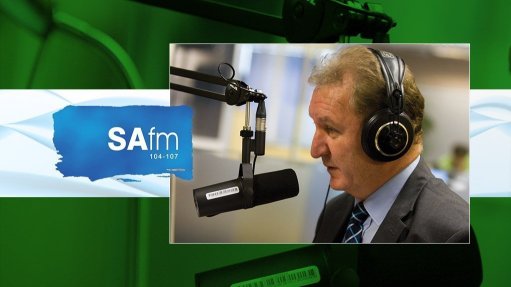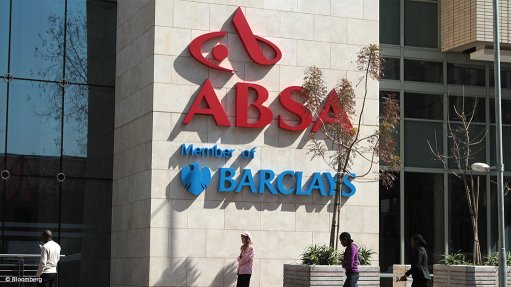Gas lock-in
“If you fail to plan, you are planning to fail,” the quote, attributed to Benjamin Franklin, reads. What happens, however, when your plan is a failure?
The misnamed draft Integrated Resource Plan (IRP) of 2023, which was eventually published only on January 4, 2024, has many elements of failure.
Most notably, it accommodates persistent loadshedding until at least 2027 – a significant failure, even if such a dismal outcome is plausible, particularly given Eskom’s recent poor record in tackling the coal fleet’s declining energy availability factor (EAF). While the draft document no longer speaks of the fleet’s EAF recovering to 75%, arguably the most ludicrous assumption included in the IRP 2019, it still includes an ambitious potential recovery from about 51% to between 66% and 69%.
The draft also fails to provide a credible vision for the future electricity system in a context where the cheapest future electrons will come from wind and solar rather than coal, and where that clean electricity will play an ever-increasing role, directly and indirectly, in industrial processes and mobility. Instead, the document outlines a sharp moderation in assumed electricity demand from 301 TWh to 256 TWh by 2030, albeit with demand surpassing the IRP 2019 projection in the 2040s, presumably as recognition of electricity’s growing role in the provision of energy services. Sadly, lower demand to 2030 is also probably plausible considering the country’s extremely weak recent growth performance, an underperformance underpinned largely by intensifying loadshedding.
The most immediate failure, however, relates to the plan’s lack of ambition for renewable energy and its over-ambition in the area of gas-to-power (GTP). Relative to the IRP 2019, the renewables allocation has been cut dramatically, with 30% less utility-scale solar photovoltaic and about 55% less utility-scale wind investment by 2030. This is largely offset by a big GTP allocation of 6 000 MW, excluding the 1 220 MW associated with the Karpowership projects, which failed to reach financial close ahead of the expiration of their grid-access budget quotes.
Now, adding a large amount of GTP capacity is not a problem in itself. The problem lies in the assumption that these plants will have a “high utilisation factor”, of over 85%. The effect will be a crowding out of cheaper renewables and a locking in of gas-based power, produced (at least initially) from dollar-denominated liquefied natural gas, adding a whole new layer of price risk.
To achieve such an outcome, it appears that all the GTP determinations, including the controversial 3 000 MW Eskom determination, were hard-wired into the draft IRP, while there has been no similar hard wiring for the renewables determinations. Presumably this constraining of new renewables is on the back of assumed grid constraints, which have been amplified in recent years by Eskom’s extremely conservative approach to curtailment.
Should no adjustment be made following the public-comment period, the high gas volumes assumed in the draft will be locked in for 20 years, with significant consequences for the future system and its competitiveness in sustaining and attracting investment.
Comments
Press Office
Announcements
What's On
Subscribe to improve your user experience...
Option 1 (equivalent of R125 a month):
Receive a weekly copy of Creamer Media's Engineering News & Mining Weekly magazine
(print copy for those in South Africa and e-magazine for those outside of South Africa)
Receive daily email newsletters
Access to full search results
Access archive of magazine back copies
Access to Projects in Progress
Access to ONE Research Report of your choice in PDF format
Option 2 (equivalent of R375 a month):
All benefits from Option 1
PLUS
Access to Creamer Media's Research Channel Africa for ALL Research Reports, in PDF format, on various industrial and mining sectors
including Electricity; Water; Energy Transition; Hydrogen; Roads, Rail and Ports; Coal; Gold; Platinum; Battery Metals; etc.
Already a subscriber?
Forgotten your password?
Receive weekly copy of Creamer Media's Engineering News & Mining Weekly magazine (print copy for those in South Africa and e-magazine for those outside of South Africa)
➕
Recieve daily email newsletters
➕
Access to full search results
➕
Access archive of magazine back copies
➕
Access to Projects in Progress
➕
Access to ONE Research Report of your choice in PDF format
RESEARCH CHANNEL AFRICA
R4500 (equivalent of R375 a month)
SUBSCRIBEAll benefits from Option 1
➕
Access to Creamer Media's Research Channel Africa for ALL Research Reports on various industrial and mining sectors, in PDF format, including on:
Electricity
➕
Water
➕
Energy Transition
➕
Hydrogen
➕
Roads, Rail and Ports
➕
Coal
➕
Gold
➕
Platinum
➕
Battery Metals
➕
etc.
Receive all benefits from Option 1 or Option 2 delivered to numerous people at your company
➕
Multiple User names and Passwords for simultaneous log-ins
➕
Intranet integration access to all in your organisation





















